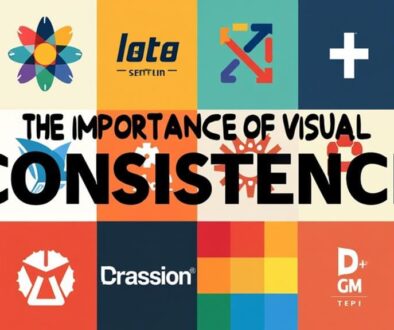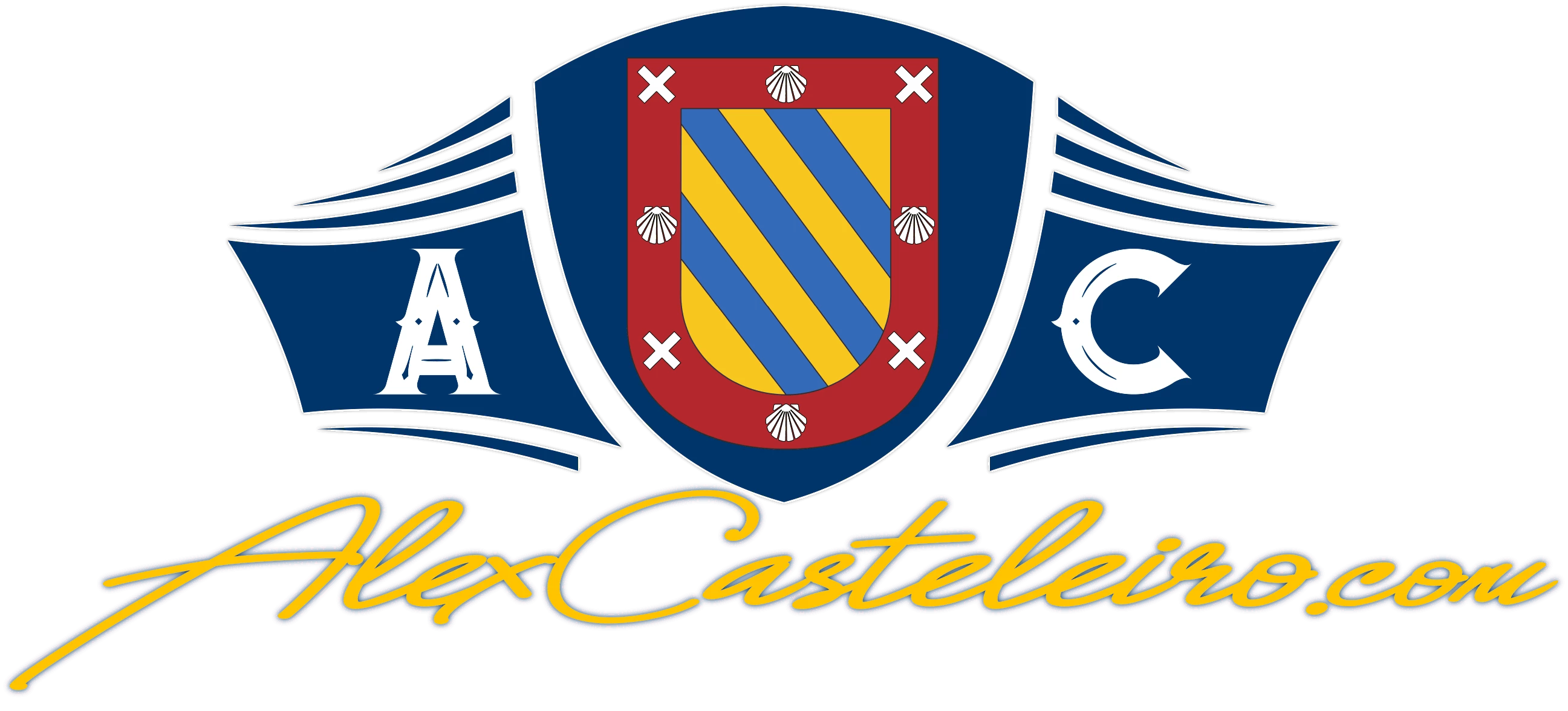The Role of Visual Branding in Building Brand Recognition
Visual branding plays a vital role in establishing brand recognition by shaping consumer perceptions and enhancing recall. Key elements such as logos, color palettes, and typography contribute to a cohesive identity that resonates emotionally with consumers. Effective visual branding creates a clear narrative, fostering connections that differentiate a brand in a crowded marketplace. Consistency across various platforms further reinforces these relationships, ensuring that brand messages are coherent and reliable. By understanding these dynamics, businesses can leverage visual branding as a powerful tool for engagement and loyalty. Exploring these aspects reveals deeper insights into effective brand strategies.
Key Takeaways
- Visual branding creates emotional connections, enhancing consumer loyalty and fostering lasting relationships with target audiences.
- Consistent visual identity across platforms reinforces brand recognition and builds consumer trust, ensuring a unified message.
- Effective logo design encapsulates brand essence, facilitating instant recognition and differentiation in crowded marketplaces.
- Color palettes influence consumer perceptions and emotions, shaping brand recognition and loyalty through psychological impacts.
- Typography establishes brand personality and hierarchy, guiding audience attention while enhancing readability and recall.
Importance of Visual Branding

In the domain of marketing, the significance of visual branding cannot be overstated; it serves as the cornerstone of consumer perception and brand identity. Effective visual branding goes beyond mere aesthetics; it harnesses visual perception to facilitate brand recall, making it easier for consumers to identify and remember a brand amidst the noise of a crowded marketplace.
The evolution of design plays a vital role in adapting to changing consumer preferences and cultural influences, ensuring that brands remain relevant and resonant.
Central to visual branding is the concept of brand differentiation. A well-executed visual identity employs a strategic visual hierarchy that guides audience engagement, directing attention to key elements of the brand. This intentional structuring not only enhances user experience but also strengthens market positioning, empowering brands to carve out distinct niches.
Furthermore, sensory branding leverages the interplay of visuals and other sensory stimuli to create a holistic brand experience. This approach deepens emotional connections, fostering loyalty and advocacy among consumers.
As market dynamics continue to evolve, the importance of visual branding becomes increasingly pronounced. Brands that invest in a cohesive visual identity are better equipped to navigate competitive landscapes and adapt to shifting consumer sentiments.
Key Elements of Visual Identity
The key elements of visual identity, particularly logo design and color palette, are essential in shaping consumer perceptions and fostering brand recognition.
A well-crafted logo serves not only as a visual anchor but also communicates the essence of the brand, while a thoughtfully chosen color palette can evoke specific emotions and associations.
Together, these elements create a cohesive identity that resonates with target audiences and differentiates a brand in a crowded marketplace.
Logo Design Importance
A well-crafted logo serves as a cornerstone of a brand's visual identity, encapsulating its essence and values in a single, memorable image. The logo's evolution reflects not only the brand's journey but also its adaptability to shifting market landscapes.
A successful logo must demonstrate design scalability, guaranteeing it retains its impact across various platforms and sizes. Visual simplicity is paramount; intricate designs often hinder logo memorability, while straightforward concepts promote instant recognition.
Incorporating shape symbolism can enhance cultural significance, allowing a logo to resonate deeply with target audiences. A versatile logo facilitates market differentiation, distinguishing a brand from competitors while aligning with its core messaging. This alignment is vital for fostering consumer trust and loyalty.
Additionally, a logo's adaptability guarantees it remains relevant, accommodating changes in consumer preferences and industry trends without losing its identity.
Ultimately, a logo's effectiveness hinges on its ability to connect with consumers on an emotional level, reinforcing brand values while providing a visual shorthand for the organization.
In a crowded marketplace, a thoughtfully designed logo is not merely an aesthetic choice; it is an indispensable strategic asset that drives brand recognition and loyalty.
Color Palette Psychology
Building upon the importance of logo design, color palette selection plays a pivotal role in shaping a brand's visual identity and influencing consumer perceptions. The strategic use of color associations can evoke specific emotional responses, thereby enhancing the overall brand experience.
For instance, blue often signifies trust and reliability, while red conveys energy and passion. Such associations are not merely arbitrary; they are deeply rooted in cultural influences that shape consumer behavior across diverse demographics.
Incorporating effective color combinations allows brands to establish visual hierarchy, guiding the viewer's attention to essential elements and facilitating quicker recognition. The thoughtful application of contrasting colors can also enhance brand differentiation, making it easier for consumers to distinguish one brand from another in a saturated market.
Moreover, understanding the psychological impacts of colors enables brands to resonate more profoundly with their target audience, fostering loyalty and engagement. By harnessing the power of color palette psychology, brands can guarantee their visual identity not only captures attention but also cultivates lasting emotional connections, ultimately driving brand recognition and loyalty in an increasingly competitive landscape.
Emotional Connections Through Design

Emotional connections are intricately woven into the fabric of design, influencing consumer perceptions and behaviors.
The strategic use of color psychology, typography, and visual storytelling not only establishes a brand's identity but also forges lasting relationships with its audience.
Color Psychology Impact
Color psychology plays a pivotal role in shaping brand recognition, influencing consumer perceptions and behaviors in profound ways. By understanding color associations and their underlying emotional responses, brands can establish a strong market positioning that resonates with target audiences. Different colors evoke distinct feelings; for instance, blue often symbolizes trust and dependability, while red can incite excitement and urgency. These emotional connections facilitate brand differentiation, allowing companies to stand out in competitive markets.
Moreover, cultural influences greatly affect color symbolism, as interpretations can vary widely across different societies. A brand's visual perception is thus contingent upon these cultural nuances, necessitating a tailored approach to color selection.
As design trends evolve, brands must remain aware of shifting consumer behavior, ensuring that their color palettes align with contemporary expectations while maintaining brand loyalty.
Ultimately, the strategic application of color in branding not only enhances aesthetic appeal but also fosters deep emotional connections with consumers. By leveraging color psychology effectively, brands can cultivate recognition and loyalty, transforming casual consumers into dedicated advocates.
Typography and Personality
Typography serves as a critical element in establishing a brand's personality, influencing how consumers perceive and connect with the brand on a deeper level. At the core of effective typography is the hierarchy, which guides the viewer's attention and reinforces the brand voice. By thoughtfully employing font pairing, brands can create a harmonious personality expression that resonates with their target audience.
Typeface emotions play a pivotal role in this connection; for instance, serif fonts may evoke tradition and reliability, while sans-serif fonts can communicate modernity and accessibility. The choice of type also hinges on readability factors, ensuring that the messaging is not only attractive but also easily digestible.
Moreover, cultural influences must be considered, as different demographic groups may interpret typefaces through varied lenses, impacting brand perception considerably. Effective branding alignment requires a nuanced understanding of how typography can mirror a brand's ethos, creating a cohesive narrative that captivates consumers.
Fundamentally, typography transcends mere aesthetics; it embodies the essence of a brand, forging emotional connections that can drive loyalty and recognition in an increasingly competitive landscape.
Visual Storytelling Techniques
Storytelling in visual branding serves as a powerful mechanism for creating connections that resonate with consumers on a profound level. Through a carefully crafted visual narrative, brands can evoke emotional imagery that enhances audience perception and builds loyalty.
The imagery impact of design coherence guarantees that every element—from color palettes to typography—aligns with the overarching brand aesthetics, reinforcing the intended message.
Incorporating storytelling elements such as visual metaphors can deepen the connection between a brand and its audience, allowing for an intuitive understanding of the brand's values and mission. A well-structured visual hierarchy guides consumers through the narrative, guaranteeing that essential messages are emphasized and easily digestible.
This thoughtful arrangement not only captures attention but also facilitates an emotional journey that mirrors the brand's evolution over time.
Ultimately, mastering visual storytelling techniques is imperative for brands aiming to cultivate enduring relationships with their audience. By intertwining emotional connections and strategic design, brands can leverage the power of visual storytelling to enhance recognition and foster loyalty, transforming passive observers into engaged advocates.
Color Psychology in Branding
The intricate relationship between emotion and brand perception underscores the significance of color psychology in branding strategies. Colors evoke specific emotional responses and foster unique associations, making them powerful tools for brand differentiation. For instance, blue often conveys trustworthiness, while red can evoke excitement or urgency. These color associations are not universal; cultural influences play a pivotal role in shaping how colors are perceived across different regions.
Effective branding utilizes color harmony to create a cohesive visual hierarchy that guides consumers' cognitive responses. A well-structured palette not only enhances aesthetic appeal but also reinforces brand identity, facilitating brand recall among audiences.
When colors are strategically selected, they can enhance emotional resonance, leading to perception shifts that align consumer sentiments with brand values.
Moreover, color symbolism is integral to storytelling in branding. It enables brands to communicate messages succinctly and meaningfully, thereby elevating engagement.
Consider a brand that employs green to symbolize sustainability; it not only differentiates itself but also resonates with environmentally conscious consumers, fostering loyalty.
Typography's Impact on Recognition

Typography plays a pivotal role in shaping brand recognition, as the choice of font can convey distinct personality traits and values associated with a brand.
Consistency in typography not only reinforces brand identity but also enhances memorability, allowing consumers to easily identify and connect with a brand across various platforms.
Consequently, understanding the strategic implications of font selection and uniformity is essential for effective visual branding.
Font Choice Importance
Recognizing a brand often hinges on the subtleties of its visual presentation, with font choice playing a pivotal role in this process. Typography is not merely an aesthetic choice; it serves as a vessel for brand personality, conveying emotional resonance tailored to the target audience.
Effective font pairing techniques enhance visual coherence, establishing a harmonious design hierarchy that guides viewer perception. Legibility factors and readability standards are critical; a font that is difficult to read can alienate potential customers.
Additionally, cultural implications must be considered—fonts can evoke different associations across diverse demographics, influencing brand reception. For instance, a modern sans-serif may appeal to a tech-savvy audience, while a classic serif might resonate with a more traditional demographic.
Adhering to usage guidelines guarantees that typography maintains consistency across various platforms, reinforcing brand identity. When fonts align with a brand's core values, they create an immediate connection, enhancing recognition.
Consequently, the thoughtful selection of typography is not only an artistic endeavor but a strategic imperative for building a memorable brand presence in a competitive marketplace.
Consistency in Typography
A consistent approach to typography not only reinforces brand identity but also considerably enhances brand recognition. The strategic application of typography hierarchy and font pairing creates a visual language that communicates the essence of a brand.
By maintaining uniformity in typographic choices across all platforms, brands cultivate familiarity, fostering a deeper connection with their audience.
- Typography Hierarchy: Establishing a clear hierarchy aids in readability and guides the viewer's attention, making critical information easily accessible.
- Font Pairing: Thoughtfully selected font pairs can evoke specific emotions and associations, establishing a cohesive visual story that resonates with consumers.
- Brand Recall: Consistent typography facilitates quicker brand recognition, as familiar typographic elements become synonymous with the brand.
- Professionalism: A uniform typographic approach conveys professionalism and reliability, reinforcing consumer trust in the brand.
In an increasingly competitive marketplace, the meticulous application of typography can considerably influence how a brand is perceived.
Consistency Across Platforms
Achieving consistency across platforms is essential for reinforcing brand identity and enhancing recognition among consumers. In an increasingly digital world, brands must adapt their visual elements to various platforms while maintaining brand uniformity. This platform adaptation is vital for creating a multi-platform presence that resonates with diverse audience segments.
Visual coherence across branding touchpoints cultivates cross-channel synergy, ensuring that consumers receive a uniform message regardless of the medium. Integrated visuals—such as logos, color schemes, and typography—must be strategically deployed to create cohesive messaging that not only captures attention but also fosters familiarity. When audiences encounter consistent branding, their perception of the brand solidifies, enhancing trust and loyalty.
Moreover, identity reinforcement through consistent branding practices greatly influences audience perception. Discrepancies in visual branding can lead to confusion, diluting brand equity and undermining the efforts of marketers. A harmonious visual strategy across platforms enables brands to convey their core values effectively, thereby enhancing overall brand resonance.
Investing in a robust visual branding framework that prioritizes consistency paves the way for optimized audience engagement. By ensuring that all branding elements are aligned, brands can effectively navigate the complexities of a multi-channel environment, delivering a seamless experience that captivates consumers.
Ultimately, a commitment to brand uniformity across platforms not only strengthens recognition but also establishes a lasting emotional connection with the audience, fostering long-term loyalty and advocacy.
Case Studies of Successful Brands

Illustrating the power of effective visual branding, several successful brands have adeptly navigated the complexities of multi-channel marketing to enhance their recognition and loyalty.
These brands not only employ strategic visual differentiation but also embrace brand evolution to remain culturally relevant in an ever-changing marketplace.
Key case studies include:
- Nike: Leveraging sensory branding through its iconic swoosh and "Just Do It" tagline, Nike consistently adapts its visual elements to resonate with diverse audiences, showcasing its commitment to authenticity.
- Coca-Cola: With a rich heritage in visual branding, Coca-Cola's red and white color scheme and classic logo have transcended generations, illustrating the enduring impact of iconography on audience perception.
- Apple: Renowned for its minimalist design and sleek packaging, Apple exemplifies digital adaptation while maintaining brand authenticity, reinforcing its status as a leader in technological innovation and consumer loyalty.
- Starbucks: Utilizing a strong visual identity and a consistent brand experience, Starbucks has effectively conducted a competitive analysis, ensuring its branding aligns with evolving design trends without losing its core values.
These case studies illuminate the significance of visual branding as a catalyst for brand recognition.
By prioritizing cultural relevance and understanding audience perception, these brands successfully capitalize on the iconography impact, demonstrating that strategic visual branding is essential for sustained market leadership.
In a landscape defined by rapid change, mastering these principles is crucial for brands seeking to elevate their presence and foster lasting connections with consumers.
Common Mistakes to Avoid
While the success stories of brands like Nike, Coca-Cola, Apple, and Starbucks highlight the potential of effective visual branding, they also serve as a cautionary reminder of the pitfalls that can undermine brand recognition. One common mistake is succumbing to visual clutter; overly complex designs can confuse consumers and dilute the brand's message. Brands must prioritize simplicity to guarantee that their visual identity remains clear and memorable.
Inconsistent messaging further exacerbates brand dilution. When a brand's visuals vary across platforms or campaigns, it undermines trust and coherence, leaving audiences unsure of what the brand stands for.
Similarly, neglecting the audience's preferences and failing to incorporate feedback can lead to a disconnect between the brand and its consumers. An effective visual brand must evolve with its audience rather than ignore their desires.
Additionally, the use of outdated styles can alienate potential customers. Brands that cling to past aesthetics risk appearing irrelevant in a rapidly changing marketplace.
Poor scalability also poses a significant challenge; designs that do not translate well across different mediums can hinder brand recognition.
Finally, making overly trendy choices can be detrimental, as trends can quickly fade, leaving brands stranded in their obsolescence.
To build strong brand recognition, it is vital to avoid these missteps. By focusing on coherence, clarity, and audience engagement, brands can cultivate a visual identity that resonates and endures in the competitive landscape.
Measuring Brand Recognition Success

Measuring brand recognition success involves a detailed analysis of various metrics that reflect consumer awareness and perception. To effectively evaluate the impact of visual branding, businesses must employ a multifaceted approach that encompasses different brand awareness metrics, guaranteeing a thorough understanding of their effectiveness.
- Visual Identity Assessment: Evaluating the coherence and appeal of visual elements.
- Consumer Perception Analysis: Gaining insights into how consumers interpret and relate to the brand.
- Recognition Tracking Methods: Employing techniques to monitor brand visibility and recall over time.
- Audience Engagement Metrics: Analyzing interactions and feedback to gauge brand resonance.
Utilizing brand recall techniques is essential in determining how well consumers can remember the brand after initial exposure. This process often involves qualitative assessments, such as surveys and focus groups, complemented by quantitative data from recognition tracking methods.
Visual consistency evaluation plays a critical role in this analysis, as it guarantees that all branding elements communicate a unified message across various platforms.
Moreover, the integration of audience engagement metrics can shed light on how visual branding influences consumer behavior. By measuring the impact of visual branding on brand equity, businesses can ascertain the return on investment for their branding efforts.
Ultimately, a holistic approach that incorporates these elements will provide a clear picture of brand recognition success, enabling organizations to refine their strategies and bolster their market presence effectively.
Future Trends in Visual Branding
As we look toward the future, an increasing emphasis on personalization and immersive brand experiences is poised to redefine visual branding strategies. Brands must embrace augmented reality (AR) to create interactive branding opportunities that engage consumers on a deeper level. This technology allows for dynamic storytelling, enabling brands to craft personalized branding experiences that resonate uniquely with individual users.
Simultaneously, minimalist design principles will gain traction, focusing on clarity and simplicity to enhance user engagement. This approach, coupled with motion graphics, can effectively communicate complex ideas while maintaining aesthetic appeal. The integration of generative design will also foster creativity, allowing brands to produce unique visual elements that evolve in response to consumer interactions.
Cultural influences will dominate the visual branding landscape, as brands aim for an inclusivity focus that reflects diverse backgrounds and perspectives. By incorporating sustainable aesthetics, brands can align their visual identities with eco-conscious values, appealing to a growing demographic of environmentally aware consumers.
Moreover, digital integration will be pivotal, with seamless shifts between physical and digital domains enhancing brand recall. Brands that successfully leverage these trends will not only build stronger recognition but will also foster lasting connections with their audiences.
As visual branding evolves, the strategic use of technology, design principles, and cultural relevance will be essential in steering through this new landscape, ensuring brands remain relevant and memorable in an increasingly competitive marketplace.
Frequently Asked Questions
How Long Does It Take to Establish Brand Recognition Through Visual Branding?
Establishing brand recognition through visual branding typically requires consistent exposure over time, often ranging from six months to several years.
Effective visual branding fosters brand recall by creating memorable imagery that resonates with the target audience.
Visual consistency across various platforms guarantees that the brand remains recognizable, helping to embed it in consumers' minds.
As a result, a strategic approach to visual branding, coupled with sustained marketing efforts, is vital for achieving lasting brand recognition.
Can Visual Branding Influence Customer Loyalty and Retention?
Ah, the age-old question: can a logo really make you loyal? The answer lies in color psychology and logo consistency.
A cohesive visual identity fosters familiarity, which breeds trust and, ultimately, customer loyalty. Brands that consistently implement color schemes evoke emotional responses, reinforcing positive associations.
Consequently, visual branding is not merely decorative; it is a strategic tool that nurtures retention by creating an emotional bond between consumers and the brand, elevating loyalty to an art form.
What Are the Costs Associated With Developing a Visual Brand Identity?
The costs associated with developing a visual brand identity can greatly impact a company's design budget. Key expenses include hiring professional designers, procuring high-quality brand assets, and conducting market research.
Additionally, ongoing costs related to updating visual elements and ensuring consistency across platforms must be considered. A well-allocated budget for these components can yield substantial returns through enhanced brand recognition and customer loyalty, ultimately solidifying a brand's position in the competitive marketplace.
How Often Should a Brand Update Its Visual Identity?
The frequency of updating a brand's visual identity should be strategically determined, balancing the need for a visual identity refresh with the importance of brand consistency.
Typically, a thorough review every 3-5 years is advisable, allowing for timely adaptation to market trends while maintaining recognition.
Frequent, minor updates can also be beneficial, provided they do not compromise brand consistency.
Ultimately, the goal is to evolve without alienating established customer perceptions and loyalty.
Are There Legal Considerations When Creating Visual Branding Elements?
When developing visual branding elements, it is essential to evaluate legal protections such as trademark registration and copyright protection.
Trademark registration safeguards distinctive logos and symbols from unauthorized use, while copyright protection covers original artistic creations, including graphics and designs.
Failing to secure these legal safeguards may expose a brand to infringement risks and potential financial losses.
As a result, an extensive understanding of these legal frameworks is vital for brands seeking to establish and protect their visual identity.
Conclusion
Visual branding plays a vital role in establishing brand recognition, with studies indicating that consistent use of color increases brand recognition by up to 80%. This statistic underscores the significance of cohesive visual identity in a saturated market. As brands evolve, the integration of innovative design elements will remain essential for fostering emotional connections and enhancing recognition. The future of visual branding will likely be defined by adaptability and a deeper understanding of consumer psychology, ensuring lasting impressions in the minds of consumers.




